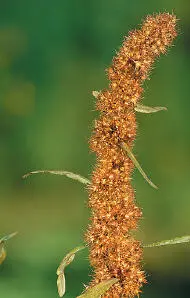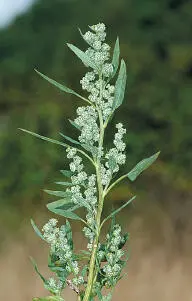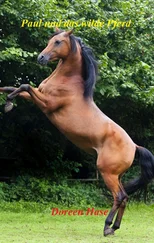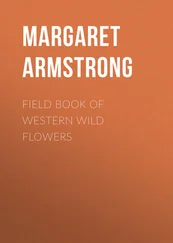Fruits
Clustered Dock Rumex conglomeratus HEIGHTto 1m
Upright perennial with a zigzag stem and spreading branches. Found in meadows and woodland margins, often on damp soil. FLOWERSIn leafy spik es. FRUITSSmall, untoothed, with 3 elongated tubercles (June–Aug). LEAVESOval; basal ones heart-shaped at base and often waisted. STATUSMostly common but rare in Scotland.


Fruit

Wood Dock

Fruits
Wood Dock Rumex sanguineus HEIGHTto 1m
Upright, straggly and branched perennial of grassy woodland rides and shady meadows. FLOWERSIn spikes; leafy only at the base (June–Aug). FRUITSWith a single elongated wart. LEAVESOval; basal ones heart-shaped at base, sometimes red-veined and never waisted. STATUSWidespread and common, mainly absent from Scotland.
Leaf
Fruit
Fiddle Dock
Fruits
Fiddle Dock Rumex pulcher  HEIGHTto 30cm
HEIGHTto 30cm
Upright to spreading perennial with branches spreading at right angles. Favours well-drained soil, often near the coast. FLOWERSOn spikes in widely separated whorls (June–Aug). FRUITSToothed, with 3 tubercles. LEAVESTo 10cm, waisted and violin-shaped . STATUSLocal, and restricted to S England and S Wales.


Marsh Dock fruit

Golden Dock fruit

Golden Dock
Marsh Dock
Golden Dock Rumex maritimus  HEIGHTto 70cm
HEIGHTto 70cm
Annual or biennial of muddy freshwater margins. Turns golden yellow in fruit . FLOWERSIn dense, widely separated whorls (June–Aug). FRUITSWith 3 tubercles and teeth longer than valves . LEAVESLanceolate. STATUSWidespread but local, mainly in the south. Marsh Dock R. palustris is similar but does not turn yellow ; fruit teeth shorter than valve .
 See also Shore Dock
See also Shore Dock
Blinks to Goosefoot Families
Springbeauty
Springbeauty Claytonia perfoliata (Portulacaceae) HEIGHTto 30cm
Annual, introduced from N America; naturalised on dry, sandy soil. FLOWERSWhite, 5-petalled, 5mm across; in loose spikes (Apr–July). FRUITSCapsules. LEAVESOval and stalked at the base; flowering stems bear fused pairs of perfoliate leaves. STATUSWidespread and locally abundant.

Pink Purslane
Pink Purslane Claytonia sibirica (Portulacaceae) HEIGHTto 30cm
Annual or perennial, introduced from N America. Favours damp woods. FLOWERSPink with darker veins, 5-petalled, 15–20mm across (Apr–July). FRUITSCapsules. LEAVESOval, stalked at the base; flowering stems carry opposite pairs of unstalked leaves. STATUSWidely naturalised.

Blinks
Blinks Montia fontana (Portulacaceae) USUALLY PROSTRATE
Low-growing, sometimes mat-forming plant of bare, damp ground; sometimes grows partly submerged in water. Stems sometimes reddish. FLOWERSTiny, white; in terminal clusters (May–Oct). FRUITSRounded capsules. LEAVESNarrow oval, opposite. STATUSWidespread and common but least so in the south.
Hottentot-fig
Hottentot-fig Carpobrotus edulis (Aizoaceae) CREEPING
Exotic-looking fleshy perennial, introduced from S Africa. Forms carpets on coastal cliffs and banks. FLOWERSUsually yellow (sometimes fade pinkish), 7–10cm across, many-petalled (May–Aug). FRUITSSwollen and succulent. LEAVESDark green, succulent, 3-sided, 6–7cm long and narrow. STATUSNaturalised in the south-west.

Fathen

Fat-hen
Flowers
Fat-hen Chenopodium album (Chenopodiaceae) HEIGHTto 1m
Upright, branched annual of disturbed arable land. Often has a mealy appearance . FLOWERSWhitish green, in leafy spikes (June–Oct). FRUITSRounded, and surrounded by 5 sepals, in a ring. LEAVESGreen, matt-looking due to a mealy coating; varying from oval to diamond-shaped. STATUSCommon. Fig-leaved Goosefoot C. ficifolium is similar but with fig-like leaves. The flowers are greenish (July–Oct). Local on clay in central and S England.

Red Goosefoot
Fig-leaved Goosefoot
Red Goosefoot
Flowers
Читать дальше





 HEIGHTto 30cm
HEIGHTto 30cm



 HEIGHTto 70cm
HEIGHTto 70cm See also Shore Dock
See also Shore Dock















